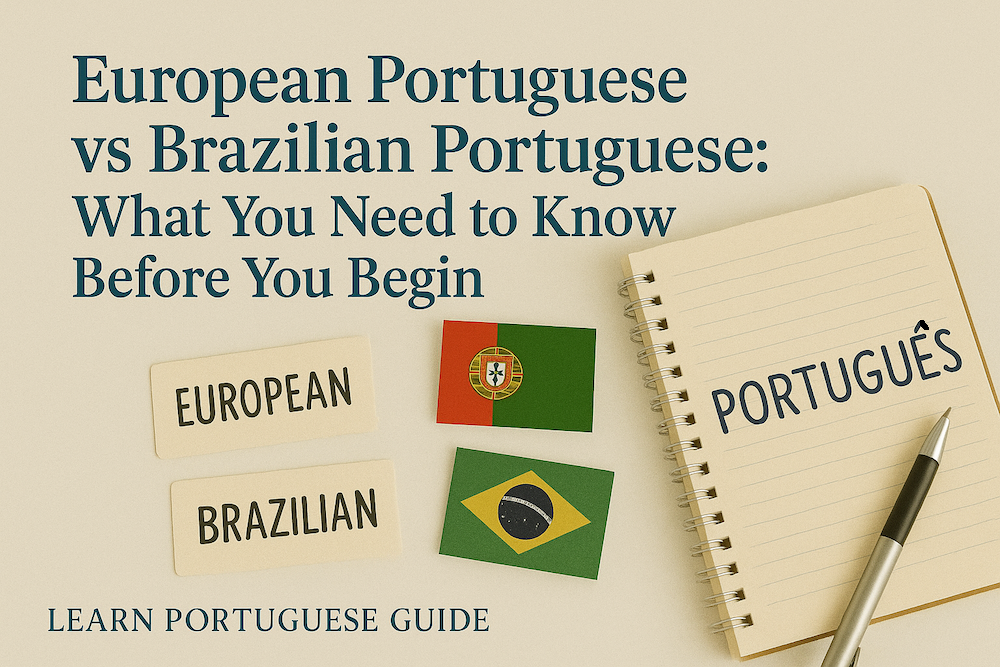
Getting Started
European Portuguese vs Brazilian Portuguese: What You Need to Know Before You Begin
If you're just starting out on your Portuguese language journey, one of the first decisions you'll face is which version to learn: European Portuguese (spoken in Portugal) or Brazilian Portuguese (spoken in Brazil). While they’re mutually intelligible, the differences are big enough to matter—especially for learners.
Here’s what you need to know before you begin:
1. Pronunciation: The Big One
The most striking difference is in how the two variants sound. Brazilian Portuguese is often described as more melodic and open, while European Portuguese has more muted vowels and faster, more compressed speech.
- In Portugal, many unstressed vowels are swallowed or dropped.
- Brazilians tend to pronounce every syllable more clearly.
This means that European Portuguese is often harder for beginners to understand by ear, even if they recognise the words.
2. Vocabulary Differences
Just like British and American English, there are vocabulary differences that can occasionally cause confusion:
- Bus:
autocarro(PT) vsônibus(BR) - Cell phone:
telemóvel(PT) vscelular(BR) - Ice cream:
gelado(PT) vssorvete(BR)
While the core vocabulary overlaps, it’s good to get used to your target dialect’s specific words early on.
3. Grammar and Verb Forms
Grammar differences exist, though they’re subtle:
- In Portugal, formal you (
você) is rarely used—tu is more common in informal settings. - In Brazil,
vocêis used in almost all situations. - Some verb conjugations are used differently (or not at all) in each country.
European Portuguese sticks closer to traditional grammar structures, which can feel more formal to learners.
4. Cultural and Regional Considerations
Where do you plan to use your Portuguese?
- If you're moving to or living in Portugal, learning European Portuguese is the obvious choice.
- If you’re mostly interested in Brazilian culture, music, or travel—you might lean toward Brazilian Portuguese.
Also note that Portugal’s variant is used in parts of Africa (Mozambique, Angola) and in official EU contexts.
5. Learning Resources
Brazilian Portuguese has more resources available, especially apps, podcasts, and books. European Portuguese is catching up—but you may have to hunt more carefully for good EP-specific materials.
That’s where Learn Portuguese Guide comes in—we help you find the right tools for your path.
Final Thoughts
Both versions are beautiful and culturally rich. If you’re planning to live in Portugal or work with Portuguese Europeans, learning European Portuguese is worth the extra effort. This site is focused only on European Portuguese.
But whichever path you take, the most important thing is to just start.
Need help deciding which resources are best for you? Stick around—we’ve got you covered.